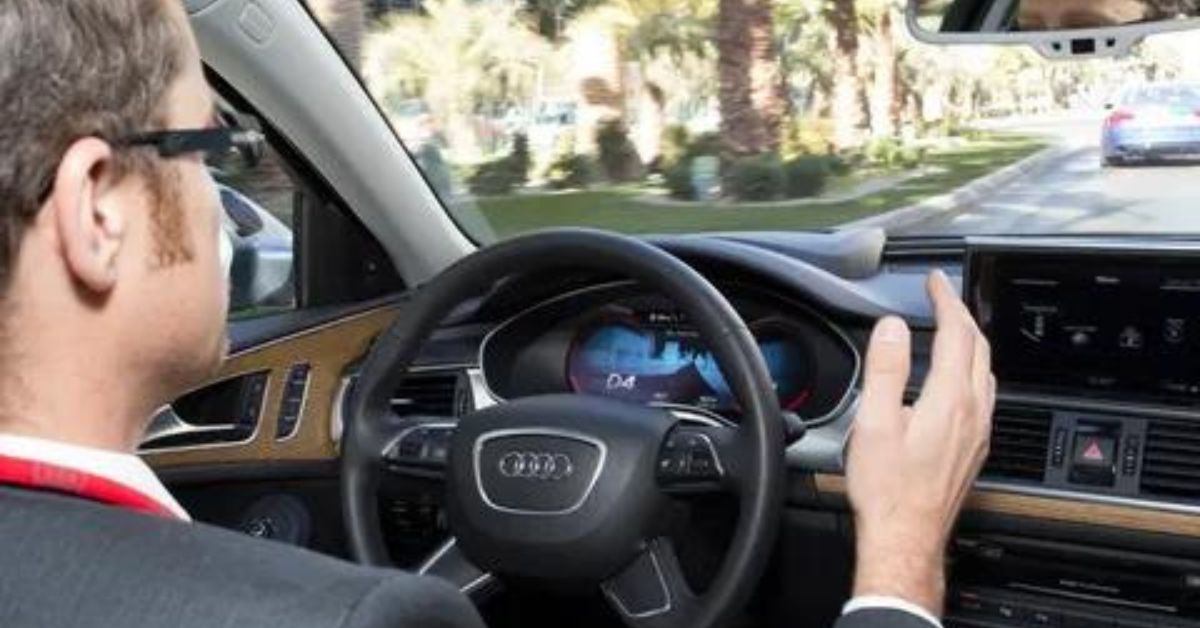Traveling at high speeds demands precision, engineering excellence, and rigorous safety measures. Innovations like streamlined aerodynamics, robust propulsion systems, and advanced materials ensure efficiency and safety. Yet, high-speed travel also offers adventure, blending cutting-edge technology with the thrill of rapid movement. From bullet trains to supersonic jets, these journeys transform mundane trips into exhilarating experiences, connecting distant places swiftly and seamlessly, redefining modern travel.
Travelling at high speeds involves more than just stepping on the gas pedal. It requires understanding vehicle control, practising safe braking, and adhering to legal guidelines. In this blog, we’ll cover essential aspects of high-speed travel to help you stay safe and in control on the road. So buckle up, and let’s get started!
The Essentials of High-Speed Travel
High-speed travel can be exhilarating, but it’s crucial to understand the responsibilities and risks involved. This blog will guide you through the key components of safe high-speed travel, from vehicle control techniques to legal considerations. High-speed travel, epitomized by bullet trains and supersonic jets, hinges on advanced engineering, aerodynamics, and safety protocols.
Essential components include streamlined designs, powerful propulsion systems, and state-of-the-art materials to withstand high velocities. Innovations like magnetic levitation (maglev) enhance speed and efficiency. Focused on reducing travel time, high-speed travel transforms connectivity and mobility, revolutionizing transportation infrastructure worldwide.
Increased steering input, longer following distances, and longer stopping distances are necessary while driving at high speeds.
The Importance of Vehicle Control in a Skid
One of the essential skills for high-speed travel is vehicle control, especially in a skid. A skid occurs when your tyres lose traction with the road and can cause loss of power and accidents. To avoid this, it’s crucial to maintain proper tyre pressure, keep your speed within limits, and be aware of weather conditions before hitting the road.
Practising Safe Braking Techniques
It’s no secret that braking at high speeds requires a different approach than regular driving. Remember to apply firm pressure on the brake pedal when braking at high speed while keeping your eyes focused on where you want to go instead of what you want to avoid. There have been improvements to abs including technique will help prevent losing control of your vehicle and potentially causing an accident.
Apprehending Skids
When your vehicle skids, you’re temporarily losing control. Skidding occurs when tyres lose their grip on the road due to wet surfaces, icy conditions, or sudden manoeuvres. It’s a scary experience, but knowing how to regain control is vital.
Techniques for Regaining Control
- Stay Calm: Panicking will only make the situation worse. Take a deep breath and keep your composure.
- Steer into the Skid: Turn your steering wheel in the direction you want the front of the car to go. If your rear tyres are skidding to the right, steer right.
- Avoid Braking: Sudden braking can worsen the skid. Instead, ease off the accelerator and allow the vehicle to slow naturally.
Real-World Examples
Imagine driving down a slick highway and suddenly hitting a patch of ice. Your car starts to skid sideways. By steering into the skid and keeping calm, you can regain control and avoid a potential accident. Real-world examples of high-speed travel include Japan’s Shinkansen bullet trains, capable of up to 320 km/h, and the Concorde, a supersonic passenger jet that flew at Mach 2. China’s maglev trains, reaching 431 km/h, also showcase cutting-edge technology, significantly reducing journey times.
The Science Behind Hard Braking
When a car brakes hard, its weight shifts towards the front, causing the rear tyres to lose their grip on the road. Traveling At High Speeds Requires can result in a dangerous skid and loss of control.
To prevent this, experts recommend avoiding sudden braking and using gradual deceleration techniques. By doing so, the vehicle’s weight distribution remains more balanced, allowing for better traction and control. The science behind hard braking involves rapid deceleration, where kinetic energy converts to heat via friction in the brake pads and rotors. Advanced systems like anti-lock brakes (ABS) prevent wheel lockup, maintaining traction and control. Traveling at high speeds requires dynamic process ensures the vehicle stops swiftly and safely, minimizing accident risks.
What is Hard Braking?
Hard braking refers to the sudden application of the brakes, which can be necessary in emergencies. Understanding how to brake effectively can save lives.
The Role of ABS Systems
Anti-lock Braking Systems (ABS) prevent the wheels from locking up during hard braking. This technology allows you to maintain steering control, reducing the risk of skidding.
How to Brake Effectively
- Apply Steady Pressure: Press the brake pedal firmly and steadily. Don’t pump the brakes if you have ABS.
- Look Where You Want to Go: Keep your eyes on your intended path, not on obstacles.
- Practice Makes Perfect: Familiarize yourself with how your vehicle’s brakes respond in different conditions to improve your reaction time.
Practical Example
Consider driving in heavy traffic, and a car in front suddenly stops. You can avoid a collision by applying steady pressure to your brakes and trusting your ABS.
The Significance of Seatbelt Use
Seatbelts are essential for your safety while driving. They can significantly reduce the risk of injury or death in a car accident. In fact, according to the National Highway Traffic Safety Administration, seatbelt use saved an estimated 14,955 lives in 2017 alone.
Not only does wearing a seatbelt help protect you from being ejected from the vehicle during a crash, but it also helps prevent you from colliding with the steering wheel, windshield, or other passengers inside the car. It is important to remember that no matter how short the distance or how experienced a driver you may be, always wear your seatbelt.
In addition to protecting yourself, wearing a seatbelt protects others in the car.
Why Seatbelts Matter
Seatbelts are your first line of defence in an accident. They keep you securely in place, reducing the risk of injury or ejection from the vehicle. Without a seatbelt, you are at risk of being thrown around the car or even ejected from it during a crash. Traveling At High Speeds Requires can lead to serious injuries, paralysis, or even death.
According to the National Highway Traffic Safety Administration (NHTSA), seatbelts saved an estimated 14,955 lives in 2017 alone. That is almost 15,000 people whose lives were potentially spared because they chose to wear their seatbelt.
The Role of Locked Doors
Locked doors are less likely to fly open during a crash, keeping passengers safe inside the vehicle. Traveling At High Speeds Requires simple action can also prevent doors from being forced open upon impact. In addition, locked doors can also prevent unauthorized individuals from entering the car while it is in motion.
Real-Life Impact
In a high-speed crash, seatbelts and locked doors can mean the difference between life and death. Make it a habit to buckle up and lock your doors every time you drive. It may seem small and insignificant, but it could ultimately save your life. Don’t let complacency or convenience put you at risk on the road.
Legal and Safety Aspects of High-Speed Travel
Locking doors and wearing seatbelts are crucial not only for personal safety but also for legal reasons. In most countries, wearing a seatbelt while driving or riding in a vehicle is required. Failure to do so can result in fines or even your driver’s license suspension.
In terms of locked doors, many states have laws requiring drivers to ensure all passengers under 18 are properly secured inside the vehicle. Traveling At High Speeds Requires includes making sure all doors are locked before beginning the journey. Failure to comply with these laws can result in penalties and possible legal consequences if an accident occurs.
Also, locking your car doors can help protect against theft and break-ins while on the road.
California Laws on High-Speed Driving
In California, speed limits are strictly enforced to ensure road safety. Understanding these laws can help you avoid fines and reduce accident risks.
Safety Regulations
- Speed Limits: Adhere to posted speed limits. Exceeding these limits can result in hefty fines and increased accident risks.
- Reckless Driving: Driving aggressively or recklessly can lead to severe penalties, including suspension.
- DUIs: Driving under the influence of alcohol or drugs significantly impairs your ability to drive safely and is strictly prohibited.
Staying Informed
Keep yourself updated on local traffic laws and regulations. Knowledge is power when it comes to safe driving.
Tips for Safe Driving at High-Speed
Driving at high speeds requires heightened attention and precise control. Follow these tips for safety:- Leave ample space between your vehicle and others to allow for sudden stops. Indicate lane changes and turns well in advance. Keep both hands on the wheel and minimize distractions like mobile phones. Ensure tyres are properly inflated and have sufficient tread. Abide by speed limits and adjust for weather conditions. Keep your vehicle in top condition, especially brakes and suspension.
Know Your Vehicle
Understanding your vehicle’s capabilities and limitations is crucial. Regular maintenance checks ensure your car is in optimal condition for high-speed travel.
Use Technology to Your Advantage
- Cruise Control: Helps maintain a constant speed, reducing driver fatigue.
- Lane Departure Warning Systems: Alerts you if you unintentionally drift out of your lane.
- Adaptive Headlights: Improve visibility around curves and over hills.
Practice Safe Driving Habits
- Maintain a Safe Following Distance: Traveling At High Speeds Requires gives you more time to react if the car in front suddenly stops.
- Stay Focused: Avoid distractions such as texting or eating while driving.
- Adjust Speed for Conditions: Slow down in adverse weather conditions or heavy traffic.
Practical Advice
Imagine driving on a long stretch of highway using cruise control. It helps maintain a steady speed, reducing the strain on your right foot and allowing you to focus more on the road ahead.
Comprehending High-Speed Dynamics
Effects of Air Resistance
Air resistance, also known as drag, significantly affects vehicles traveling at high speeds. As the speed increases, the force of air resistance also increases. This force acts in the opposite direction to the vehicle’s motion and can decrease acceleration and overall speed. To minimize the effects of air resistance, drivers need to consider aerodynamic modifications such as reducing frontal area or adding streamlined features.
Vehicle Stability at High Speeds
Vehicle stability is a critical factor when traveling at high speeds. Even minor disturbances can have a more significant impact on a vehicle’s stability at higher speeds. Factors such as wind gusts or sudden lane changes by other vehicles can lead to loss of control if proper precautions are not taken. Drivers need to maintain focus and concentration while driving at high speeds and be prepared to react quickly to unexpected situations.
Impact of Speed on Braking Distance
The impact of speed on braking distance must be considered when traveling at high speeds. Braking distance refers to the distance a vehicle travels from the moment brakes are applied until it comes to a complete stop. As speed increases, so does braking distance due to factors like momentum and reaction time. Drivers should keep this in mind and maintain an appropriate distance from other vehicles while traveling at high speeds.
Aerodynamic Modifications for High-Speed Travel
Aerodynamic modifications are essential in improving performance and safety during high-speed travel. These modifications reduce drag, increase stability, and enhance fuel efficiency. Some common aerodynamic modifications include installing spoilers or splitters for better airflow management, using underbody panels for smoother air passage under the vehicle, or optimizing wheel designs to minimize turbulence. Implementing these modifications can significantly improve the overall driving experience and safety at high speeds.
Safety Measures for High-Speed Travel
Use of Safety Belts
Safety belts are critical to safe driving at high speeds. They help secure passengers in their seats and prevent them from being thrown forward in the event of sudden braking or a collision. By properly wearing safety belts, drivers and passengers can significantly reduce the risk of severe injury or death. It is essential always to wear safety belts when traveling at high speeds.
Importance of Airbags
Airbags play a significant role in protecting occupants during high-speed travel. These inflatable devices are designed to deploy rapidly upon impact and cushion the force exerted on individuals involved in accidents. When used with safety belts, airbags provide additional protection against head, neck, and chest injuries by absorbing some of the energy generated during a crash. Vehicles must be equipped with functioning airbag systems so occupants can sit adequately within reach of these life-saving devices.
Conclusion
Travelling at high speeds requires skill, knowledge, and responsibility. By understanding vehicle control, practising effective braking, using safety features, and adhering to legal guidelines, you can enjoy the thrill of high-speed travel while minimizing risks. Remember, responsible driving keeps you safe and protects others on the road.
If you want to learn more about safe driving techniques or need expert advice, don’t hesitate to contact our community of experienced drivers and professionals. Stay safe and drive responsibly!
FAQ
Why is it important to wear seatbelts and lock doors?
Seatbelts keep you securely in place during a crash, while locked doors are less likely to open, preventing ejection and serious injury.
What are the consequences of speeding in California?
Speeding can result in hefty fines, increased accident risks, and severe penalties, including license suspension.
How can technology enhance high-speed driving safety?
Cruise control, lane departure warning systems and adaptive headlights can help maintain steady speeds, alert you to road hazards, and improve visibility.
What are some safe driving habits to practice at high speeds?
Maintain a safe following distance, stay focused on the road, and adjust your speed according to driving conditions.
How often should I perform maintenance checks on my vehicle?
Regular maintenance checks, including tyre pressure, brake pads, and fluid levels, should be performed at least once a month to ensure your vehicle’s optimal performance.







